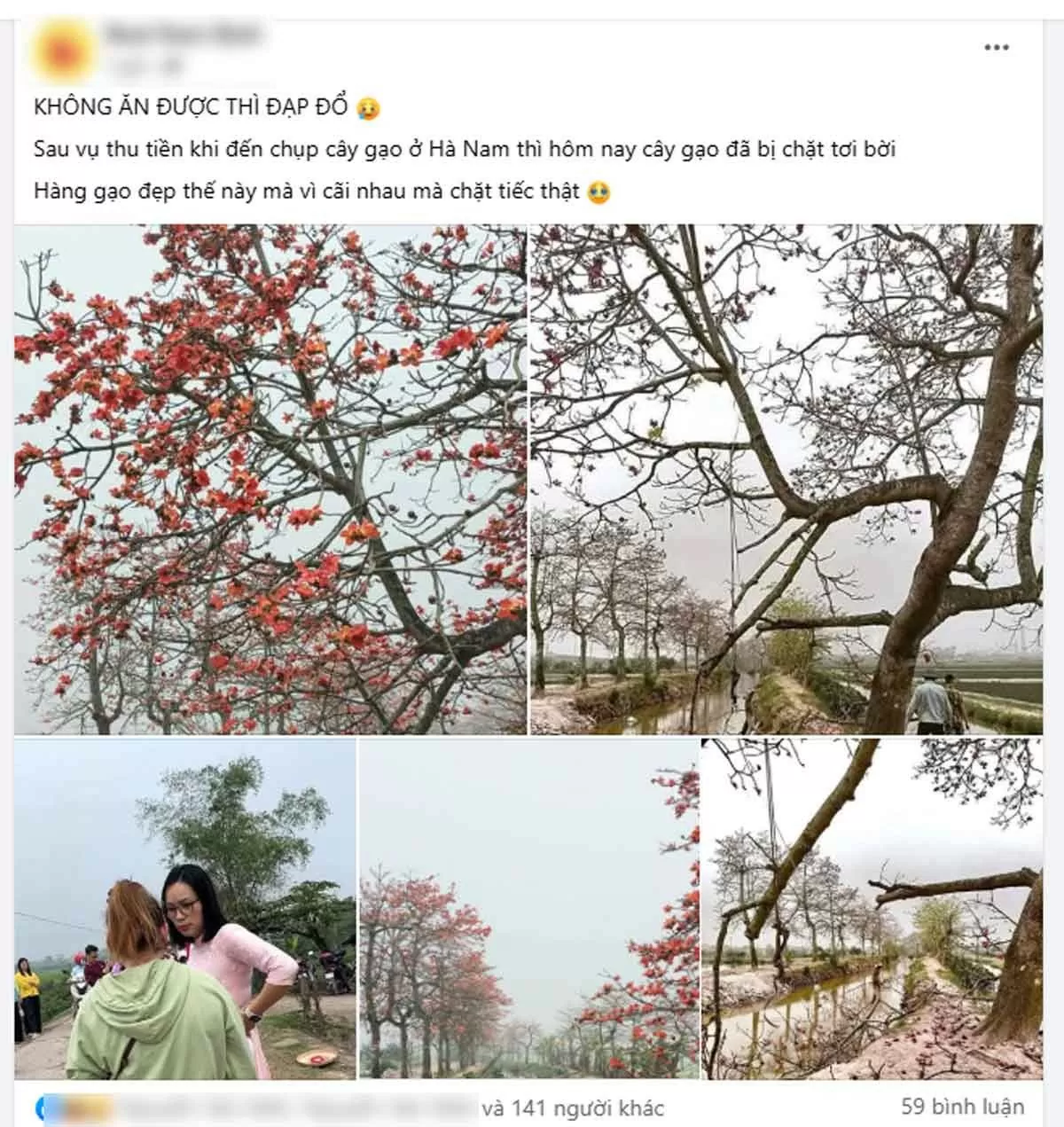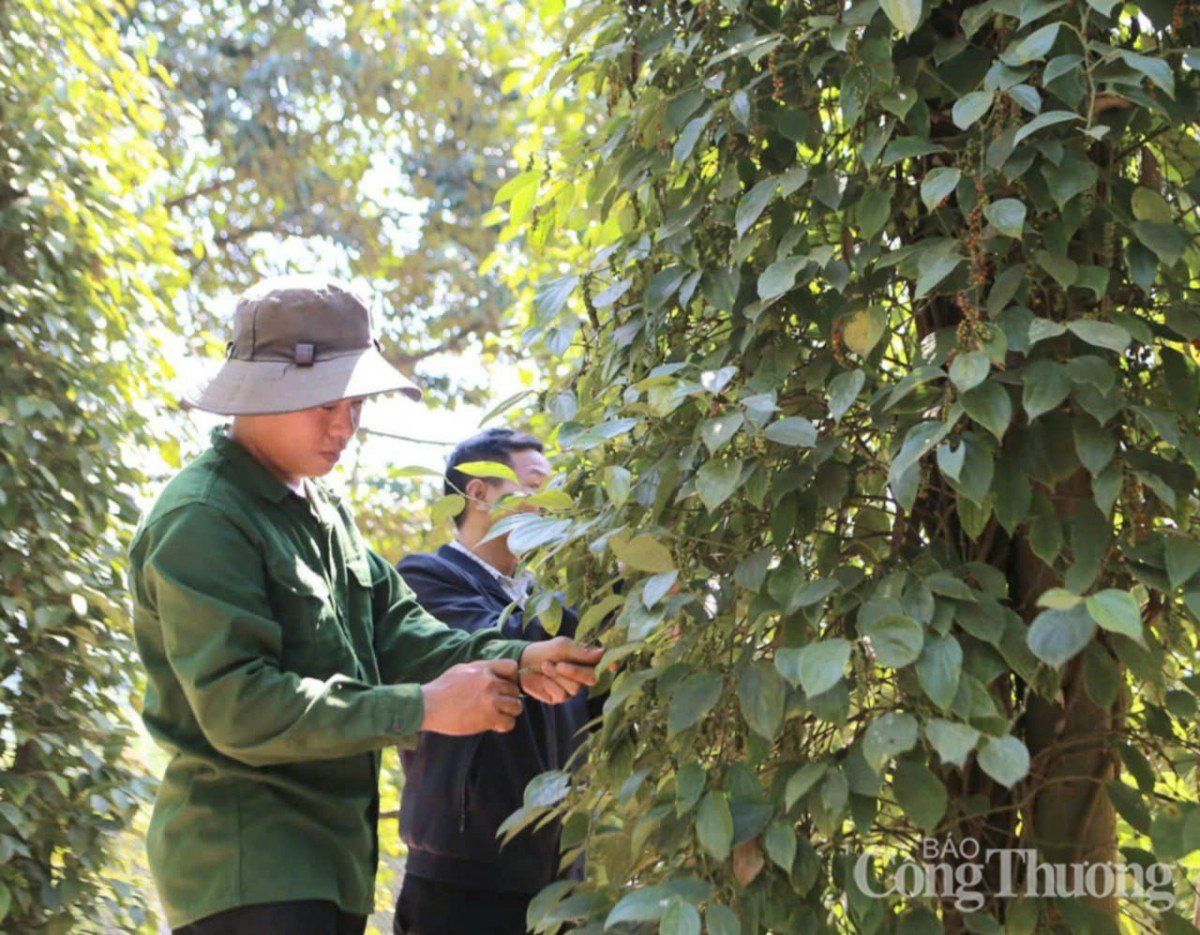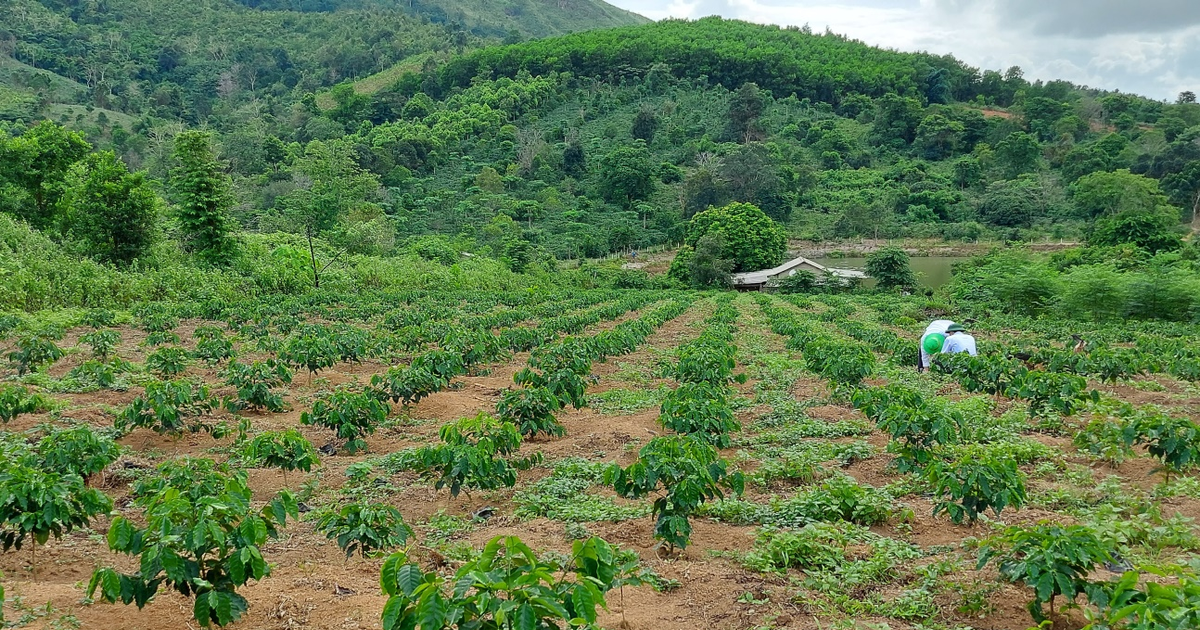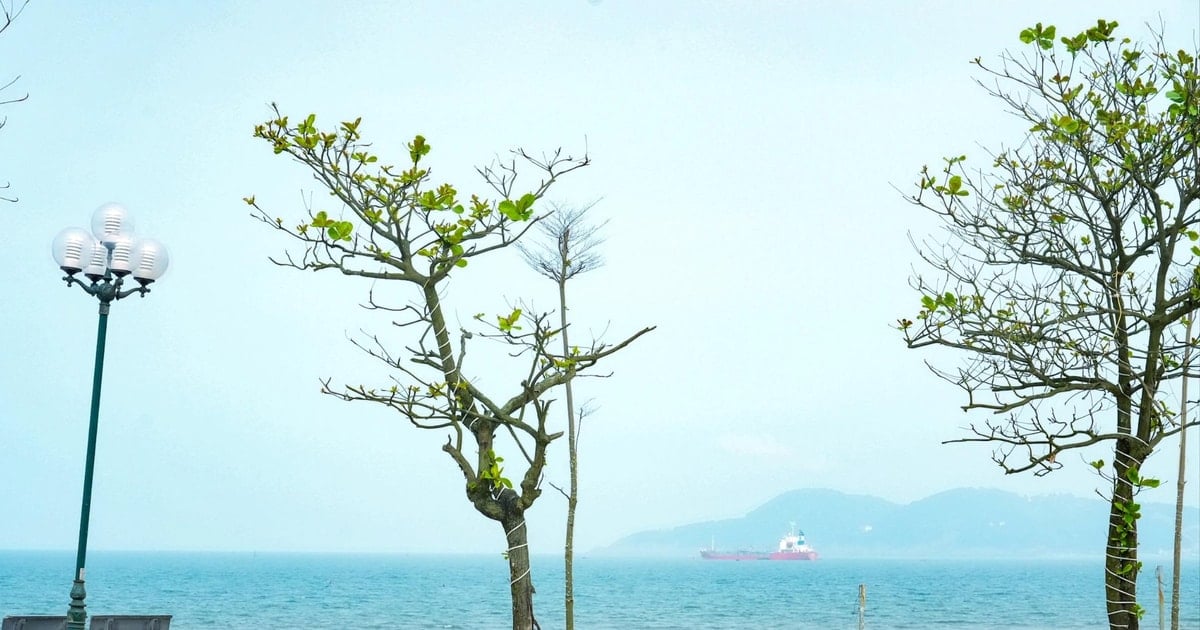"Internet phenomenon" becomes the center of controversy
Every late spring, the cotton tree flowers bloom along the dikes in the North like a red flame lighting up memories. The cotton tree is not just an image, but a symbol of life, of the soul of the countryside, of simple yet profound things.
The rice tree in Ha Nam, which used to stand silently by the field, suddenly became an "internet phenomenon". The check-in photos went viral. People flocked to it. The tree suddenly became a "million-view destination" with just one click.
But then, like a slap in the face to all dreamers... the row of bright red cotton trees was cut down not because of natural disasters, but because of... people and the incompetence of local management.
Some individuals have arbitrarily barricaded themselves and charged visitors. When they were protested, they mercilessly "handled" the landscape as if beauty were private property, and if it did not generate profit, they would... destroy it.
 |
| Images of a kapok tree in Nguyen Doai residential area, allegedly with its branches cut off, have been circulating on social media. Screenshot |
Social media can work wonders, turning an anonymous tree into a "national destination". But it is also social media, without guidance and management, that can turn beauty into a point of controversy.
People feel sorry. People are angry. People write statuses of mourning. But no one can answer a simple question: Who does that kapok tree belong to?
If it is private property, people have the right to control their living space. But is it reasonable to charge such fees? Is it financially transparent? Is there any legal basis to regulate, guide or protect them? Or is it just a spontaneous, impromptu reaction to the unexpected economic potential when the tree stump suddenly becomes a "million-view destination"?
If it is public property, which agency is responsible for coordinating it? Who is responsible for planning the destination, maintaining order, guiding tourists, and most importantly, sharing the benefits fairly with the local community?
There is no answer. Or rather, no one dares to answer. Because the ambiguity of ownership, the opacity of management and the indifference of stakeholders have turned a rice root into a symbol of a systemic failure: failure to protect beauty, failure to distinguish interests and failure to treat living heritage.
From rice roots to gaps in cultural planning
The incident is not just about "a kapok tree being cut down because of a dispute over photo fees". It is a burning question about how we treat cultural and natural assets in the digital media age.
Today it is a kapok tree. Tomorrow it could be an ancient stone beach, a terraced field, a flower-covered road, a village well, a reed-covered dike… All can “trend” after a mouse click and can also be forgotten or destroyed after an argument.
When fame comes too quickly and management is slow to update, instead of creating a sustainable tourism development model, it creates contradictions, abuses and ultimately social conflicts.
 |
| Tourists take photos on the cotton tree road in March. Photo: Thuy Ja |
Every time a beautiful scene "goes on trend", it is a fumble to follow the trend without any planning. No organization. No sharing of benefits. No legal representative. No three-party coordination process: Government - people - tourists.
In that absence, the local government, which should have stood in the middle as a pillar of harmony and protection of community property, stood aside or only reacted belatedly after everything had happened.
Why not proactively grasp "social media trends" to turn surprises into opportunities for sustainable development?
We cannot continue to consider our homeland's landscape as a short-term "consumer product", to come to take pictures, to show off, then leave, leaving behind controversy and community turmoil.
Cultural preservation cannot stop at grand festivals or beautiful slogans, but must start with preserving each tree, each dike, each ancient roof as living diaries of community memory.
A cut down kapok tree not only loses its shade but also loses an opportunity for us to learn how to behave civilly with beauty, be kind with memories and be responsible with heritage.
Don’t wait until an icon is broken to look for the culprit. What we need is a cultural ecosystem where beauty is planned, memories are preserved, communities are heard, and governments cannot stand aside.
Being famous doesn't mean you'll be protected. Going viral doesn't mean you'll last.
Only the consensus between law, community and conservation awareness can help an icon live longer than the life cycle of a trend.
Previously, on many social networking forums, information about tourists coming to Tien Noi ward, Duy Tien town (Ha Nam province) to take photos with the kapok tree had to pay a fee, attracting the attention of the community. Then, on the morning of April 11, news that the kapok trees in this area had their branches cut off due to a dispute over charging for taking photos made many people angry. |
Source: https://congthuong.vn/cay-gao-o-ha-nam-bi-chat-va-lo-hong-quan-ly-van-hoa-382645.html





![[Photo] Overcoming all difficulties, speeding up construction progress of Hoa Binh Hydropower Plant Expansion Project](https://vstatic.vietnam.vn/vietnam/resource/IMAGE/2025/4/12/bff04b551e98484c84d74c8faa3526e0)
![[Photo] Closing of the 11th Conference of the 13th Central Committee of the Communist Party of Vietnam](https://vstatic.vietnam.vn/vietnam/resource/IMAGE/2025/4/12/114b57fe6e9b4814a5ddfacf6dfe5b7f)


















































































Comment (0)